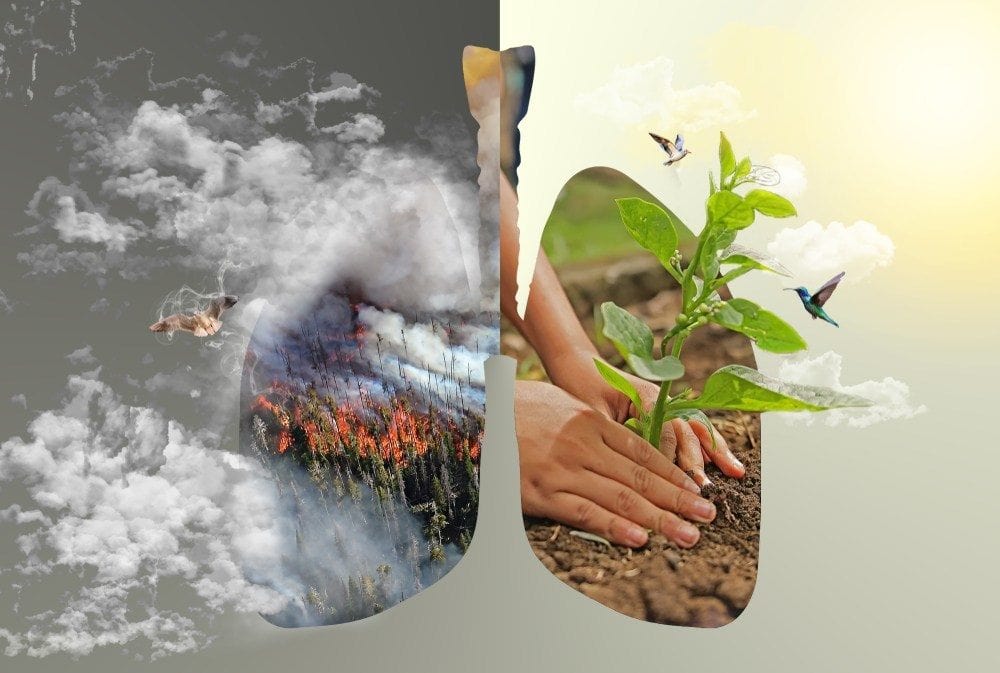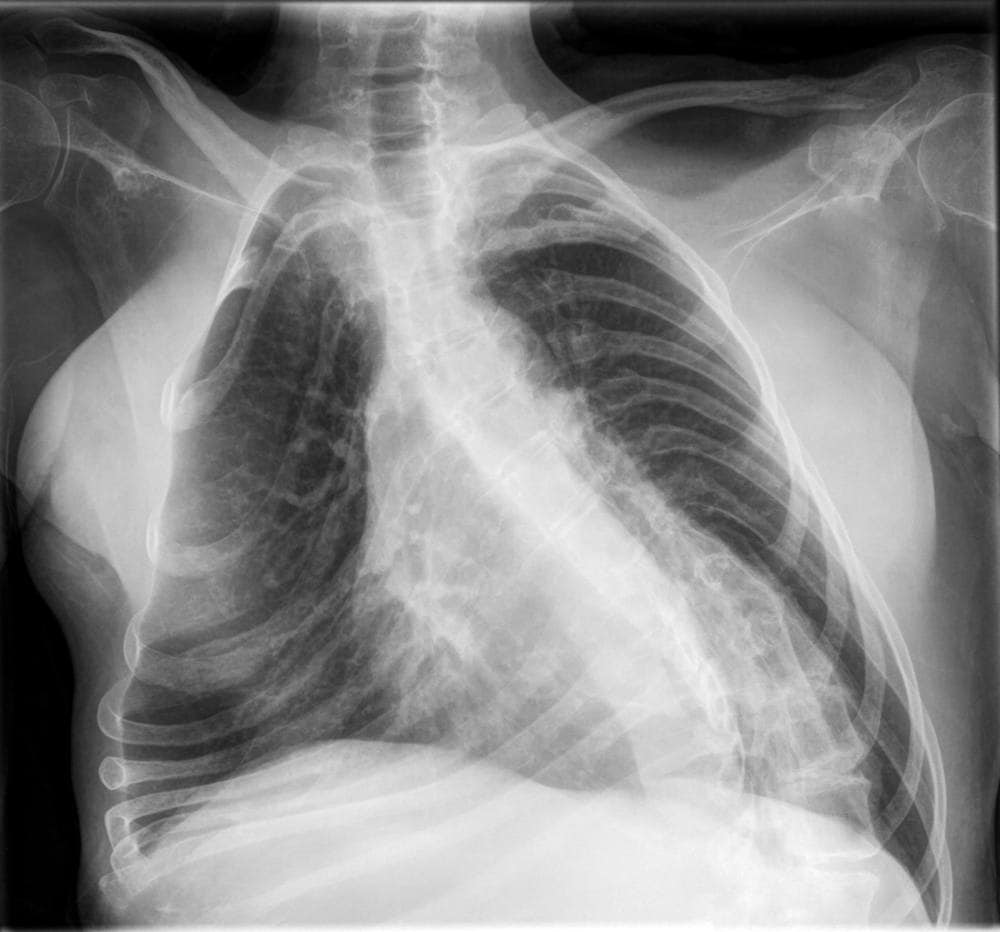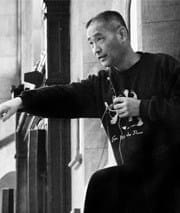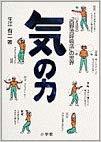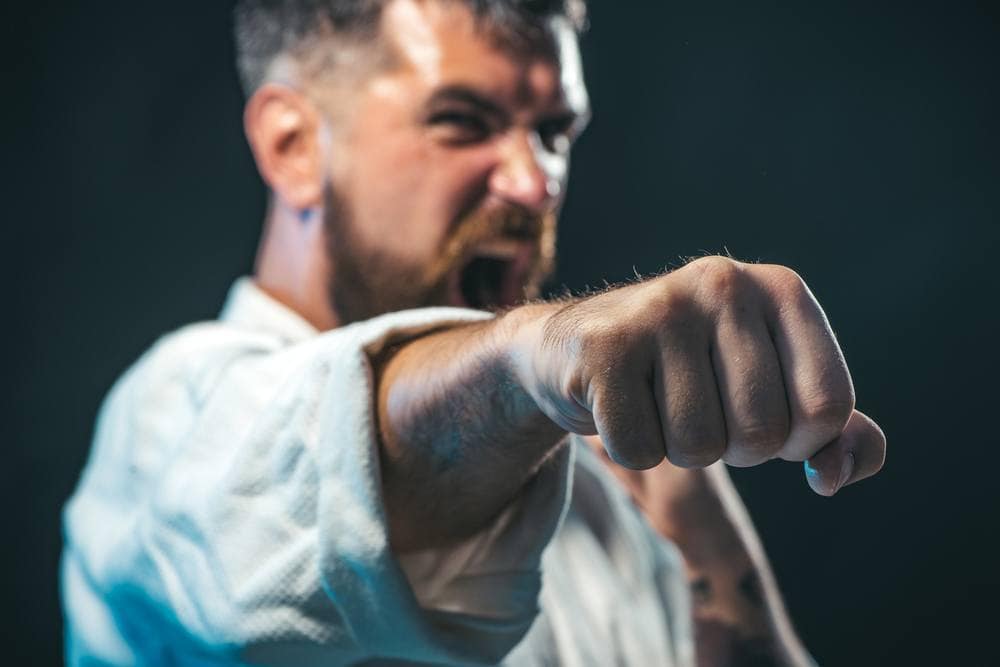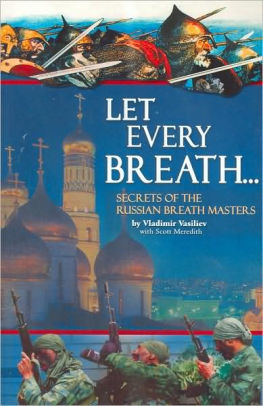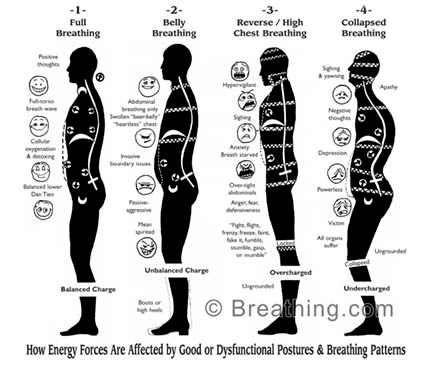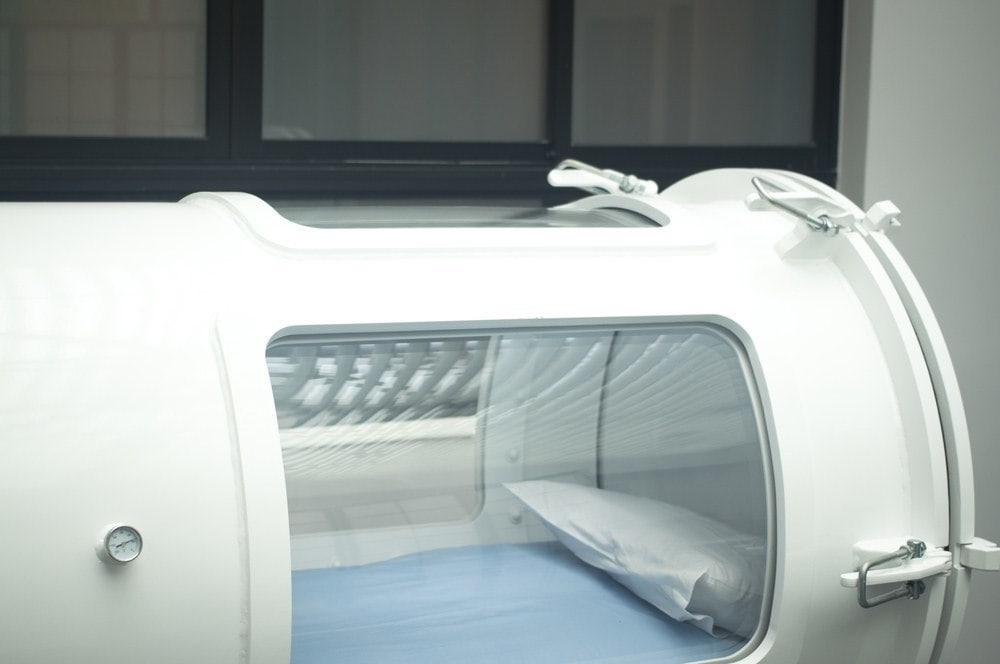Breathing is required for life, but breathing also gives many other benefits to the body and mind. Breathing cleanses and fully oxygenates the body, clarifying mind and emotions, and producing more energy for training. The power of breath control is benefit that everyone in the combat arts can achieve. It's a skill that can be acquired with a bit of patience, practice and perseverance.
The martial artist who previously thought little about breathing and using breath techniques who suddenly incorporates them into training will notice a significant difference. Unconscious breathing is the norm.
“Breathing control gives man strength, vitality, inspiration, and magic powers.”
~ Chuang Tzu
Learning to breathe consciously and purposely will trigger a cascade of positive changes, typically including more energy, power, endurance, and speed. A good example of a martial artist using breath and meditation to improve speed, power, and technique was Bruce Lee, a big proponent of meditation and conscious use of the breath/mind.
Learning how to breathe consciously can be easily accomplished by incorporating breathing exercises into weekly training sessions, and meditation sessions often as possible.
Often humans basically live in an unaware state, with thoughts and behavior automatic and unconscious. Most people notice very little except the basics such as hunger and thirst, tiredness, pain, fear and desire. Often even joy and excitement are rare.
The body is designed to feel many different sensations and emotions all the time. The natural reality of the body includes feeling good, energetic, and full of energy as an attainable state of being. Breath work and meditation are important tools for getting there.
Breath Cleanses the Body and Lungs
Breathing fulfills many necessary requirements within the body such as internal cleansing, improving oxygen delivery to vital organs, muscles, etc., which helps with performance, increasing endurance, and re-energizing the system.
Breathing in delivers fresh oxygen, nutrients, and energy to the body and blood, while breathing out removes toxic carbon dioxide, along with other toxins and poisons that are taken in or produced through daily living.
It is a fact just beginning to come to light that oxygen has fantastic healing abilities, which is why it’s given to fighters after a tough round since it accelerates recovery time after a strenuous athletic event. It has been proven to kill cancer cells, change gene expression, heal brain damaged cells, and help facilitate natural cleansing mechanisms. See more below.
Deep, purposeful breathing, along with other breath exercises such as diaphragmatic breathing, introduce great amounts of oxygen into the body, producing more benefits than simply breathing into the top of the lungs. Once different types of breath work are mastered, the martial artist will consistently draw breath into all five lobes of the lungs, including the bottom, clearing out deeply rooted toxins and expanding lung capacity.
Importance of Breathing in Martial Arts
Breathing and meditation form a vital part of achieving peak performance in Combat Art Strength and Conditioning. Controlled breathing is a very powerful tool in that process for the martial artist. The use of controlled breathing has a long history in the traditional arts, going back thousands of years, and ultimately, beginning with the ancestor of all internal martial arts which is qigong.
Essentially, when properly utilized, breath is power. It gives the martial artist power over the body, power over the emotions, and power over the mind while canceling out ‘Monkey mind,’ that hyperactive, circular ‘hamster on a wheel’ mindset that’s never quiet, never happy or satisfied. Breathing gives focus, energy, and endurance to the martial artist, channels away pain, impatience, anger, and fear. Most adults take 17,000 to 29,000 breaths in a day.
Typically, this is an unconscious process that merely serves to keep the body alive. Compare this style of breathing with the Ying family who utilize a controlled breathing technique by master Brass Head, an aspect of kung fu that uses breath control to increase strength and endurance.
Hao Sho Ying has been called China’s Man of Steel. He epitomizes the power of breath control, as do his wife and young children, all trained in Brass Head strength methods.
Lazy Breathing
Typical Western breathing is shallow, and is similar to the lazy athlete whose body is naturally powerful but does little to improve conditioning.
The combat artist who properly utilizes controlled breathing, meditation, and breathing to improve every aspect of conditioning is the athlete who has the ability to perform at the highest levels of their chosen art or fighting profession. Proper channeling of breath focuses, utilizes, and directs internal energy, or Qi. Controlling the breath controls the mind and body, simultaneously strengthening the will, developing more focus, and increasing mental clarity.
Shallow Western Breathing
Western breathing is average American breathing, which is quick, shallow, filling only the very top of the lungs and chest. It is a common but negative practice that contributes to emotional insecurities and ill health.
Toxins are constantly produced or deposited in many parts of the body, including fat cells, skin, and lungs. Breathing only into the top portion of the lungs does not clear out these toxins from the bottom of the lungs. Removing toxins is one of the primary duties of breathing.
During Western breathing, the shoulders and chest expand during inhalation while the abdomen is contracted. This is almost opposite of correct breathing action. Total lung capacity is never used to full potential in shallow Western breathing. This type of inhale only pulls in approximately 500 to 700 milliliters of air at a time.
This is significantly less air than the body needs, way less than full lung capacity, and if continued will create lung problems down the line. The positive aspect of this issue is that it is easily remedied. When using full abdominal breathing, which fills the lungs totally, one breath pulls in approximately 2,500 to 3,000 milliliters of air. The difference in air utilization between types of breathing is astounding.
Benefits of Martial Arts Breathing
There are many other benefits received when utilizing breath work. These include physical benefits such as reduced stress, and lowered center of gravity while training, caused by keeping the breath low in the abdomen. Other benefits include the psychological aspects of keeping the mind focused, calm, and grounded.
Breathing Connects the Brain, Body and Qi
Breathing creates a direct connection between the internal and external self. Therefore, it shouldn’t come as a surprise that the greatest martial arts masters throughout history utilized breathing techniques.
Grand Master Xi-Hua Xu is a Qigong master who was a professor of Taoist philosophy for more than 27 years at Yunan University, China.
He has treated members at the highest levels of the Chinese government with his Qigong and meridian expertise. In an interview, Grand Master Xi-Hua Xu had this to say about meridians, healing, Qigong, and the extraordinary abilities advanced training can give to masters. How can certain masters alter their physical bodies through meditation? It’s not simply mind over matter.
The master has learned to use the power of meridians to dramatically alter physical functions. Some masters can sit on an ice block and melt it by raising their body temperature. Some can stop their brain waves and appear as if dead. If the mind is totally gone, then what controls this situation? What allows the master to revive himself? The master has raised the art of using the power of meridians to a very high degree.”
Lung Atrophy
Our lungs are divided into five parts, or lobes, three on the right and two on the left.
The inner surface of the lungs is covered with millions of thin, tiny sacs called alveoli which absorb oxygen on the inhale, releasing toxins and carbon dioxide on the exhale.
Oxygen and other components of Qi are breathed in, enter the bloodstream, then toxins leave the body through exhalation.
Many people doing shallow breathing and using only the top two lobes of their lungs all their lives have large areas of atrophy in the lower portions of the lungs when X-rayed. Their lower lungs atrophied from simple neglect and lack of use. We live in use it or lose it bodies. Want to keep it? Use it. The brain conserves energy as a matter of course, and will stop supporting any area that is underutilized, ultimately creating atrophy and/or illness.
Our lungs are divided into five parts, or lobes, three on the right and two on the left. The inner surface of the lungs is covered with millions of thin, tiny sacs called alveoli which absorb oxygen on the inhale, releasing toxins and carbon dioxide on the exhale. Oxygen and other components of Qi are breathed in, enter the bloodstream, then toxins leave the body through exhalation.
Many people doing shallow breathing and using only the top two lobes of their lungs all their lives have large areas of atrophy in the lower portions of the lungs when X-rayed. Their lower lungs atrophied from simple neglect and lack of use. We live in use it or lose it bodies. Want to keep it? Use it. The brain conserves energy as a matter of course, and will stop supporting any area that is underutilized, ultimately creating atrophy and/or illness.
Everything that appears in the physical realm is always connected with energy flow at the invisible level
What is Qi?
Qi or Chi is basically the natural energy of the Universe, which permeates everything, creates and powers everything, and on an essential level, is everything. Each tiny physical molecule is created by and runs on Qi, which is basically energy. Qi is a physical substance has which has been detected by infra sonic, electromagnetic wave, and neutron detectors.
Qi may be of a basic energy type similar to ‘Dark Energy,’ meaning it has been difficult to isolate, but clearly exists because its effects can be seen. Recently videos have been taken of Qigong masters using Qi, and actually emitting this radiation, or energy, across long distances.
Increasing Qi with Breath?
When the body is sick, the Qi is low. The body is a type of bio-battery that requires energy to work, and that type of energy is called ‘Qi.’ Breathing and eating create more qi, whereas exercise and simply living use up the body’s Qi. If there is a deficit, and we are spending more energy than we are taking in, then there is a third source of energy which is our Essence energy, Life Force, original Qi, or Jing.
This energy is necessary to sustain life, and should never be used. Once used up, the body loses its vitality, and becomes ill or dies. It is necessary to continually renew the body’s energy or Qi through breath and food.
Martial Arts Masters Cultivate Qi
That is one reason why martial arts masters always project a feeling of great power, even when simply sitting, walking, or talking. They have spent many years cultivating Qi in their bodies, and their bio-battery is full to overflowing with it.
It is a very noticeable state of being, since most people only ‘spend’ their Qi, using it up without ever replenishing it from Source. The way to replenish Qi is through breathing, but using proper breathing techniques.
Gathering Energy in the Dan Tien or Hara
The dan tien or hara is located below the bellybutton. The dan tien is approximately three finger-widths below the navel. Lay three fingers horizontally across the belly below the navel.
Traditionally, the dan tien holds Qi. The martial artist breathes in, and pulls more Qi into the body, where it will circle around and down to the dan tien, growing stronger and stronger over time.
Basically, inhaling brings Qi along with fresh oxygen into the body. Exhaling through the nose retains the Qi energy within the body.
That’s because breathing out through the nose completes a circle, or ‘closed circuit,’ like a plugged in battery. Exhaling through the nose allows Qi energy to be transferred into the dan tien. Energy is stored there for use when needed by the martial artist.
There is a large body of research proving Qi exists, can be stored in the body, and utilized at will.
Exhaling through the mouth, however, also expels Qi from the body, which is why most breath work is performed with mouth closed. Ideally, while doing breath work, place tongue up so it touches the top palate of the mouth right behind the front teeth.
Expel air from the nose with some force so it can be heard, and contract abdominal walls when exhaling.
The Nishino Breathing Method (NBM)
The Nishino Breathing Method is similar to qigong, using breath to increase and control internal energy flow.
This energy is easily measurable by scientific method, and increases immune system cell activity after only one session.
This breathing method was developed in the 1970s by Kozo Nishino, a Japanese Qi-expert, former ballet choreographer, and master of martial arts, to raise the levels of Qi-energy, or life-energy, of an individual.
It is not a therapy or a healing technique. It is an easily learned breathing technique that gives quite incredible results. Many research studies prove this energy exists, and is emitted by the practitioner as a radiation wave that can move and affect other people.
Kiai, the Power of Breath
The meaning of kiai is the unification (“ai”) of spirit, mind, or energy (“ki” or Qi). Doing a kiai forces the martial artist to breathe, and breath control is required for proper execution.
That alone makes it a valuable tool for the martial artist. Doing a kiai contributes to defense by contracting and strengthening core muscles, protecting the internal organs from a strike. The kiai is useful offense as it may frighten or distract an opponent, while strengthening the power of a strike.
Masking Intent
In a true conflict situation masking of intent is essential. Telegraphing thoughts, intentions, and your next move can be dangerous. People typically inhale before moving or attacking, which is a dead giveaway. Abdominal breath techniques hide that ‘tell’ during sparring and from an attacker.
Military Police Use Breath Control
Vladimir Vasiliev set up Systema, the first school of Russian martial arts outside of Russia. He specifically discusses breathing and how they integrate it into their training. Termed “tactical breathing” or “combat breathing,” it’s essential for high risk encounters. Systema is a reality-based martial art that focuses on the importance of breathing during imminent threat. It recommends a method called ‘burst breathing,’ useful in hand-to-hand and close quarter combat situations.
Burst breathing utilizes a series of sharp exhales through the mouth at impact, quickly followed with a sharp inhale through the nose.
In Vasiliev's book, "Let Every Breath... Secrets of the Russian Breath Masters." outlines step-by-step Systema breathing training drills in a thorough and comprehensive way.
You will learn the methodology including the seven Systema breathing principles that provide the foundation for every physical activity of your daily life. Be patient when learning new breath techniques. It takes a few attempts with certain techniques before they begin to feel ‘natural’ and comfortable.
Try all the different types, and decide which ones work best for you. Always wear loose, comfortable clothing, sit on floor or chair in comfortable position, or stand, but always with back straight, head up, and typically with hands over dan tien.
Martial Arts Breathing Techniques
Work with your body. If a certain breath technique makes you feel short on air or like you’re hyperventilating, try expanding or shortening the length of breath for each part. For instance, if a martial artist has excellent lung capacity, a longer inhale/exhale count may be required. Or a shorter count time may be needed for those less used to incorporating controlled breathing for beginners.
Deep, Abdominal, or Diaphragmatic Breathing Technique
The same breathing technique is referred to by several different names depending on source such as martial arts, yoga, or therapy. Abdominal breathing helps energize the abdominal muscles, while massaging internal organs and increasing blood circulation.
Diaphragmatic breathing uses the diaphragm, which is a muscle at the base of the lungs) is used.
This pulls down on the lower part of the lungs, opening up the whole of the lungs, and abdominal muscles to pull in more air, so oxygen fills all five lobes of the lung and reaches the very bottom of lungs. Abdominal breathing does not raise shoulders and collar bones.
It does push out the lower abdomen as the diaphragm pulls down and displaces organs. The goal is to fill the lungs starting from the bottom, filling lungs completely.
Focus inhale and exhale on the dan tien, laying hands over area to ensure abdominal rise and fall while breathing.
- Inhale through the nose while pushing out lower abdomen, filling lower lungs first, then into rib area, finally to upper chest. Draw in air with slow count. Use same count to breath out, or slightly longer
- When lungs are completely filled bottom to top, pause a few seconds.
- Exhale slowly and gently through the nose while pulling abdomen in, so air is forced out of lower lungs, then middle, then upper lungs until completely emptied.
- Repeat 10 times or more.
Stacking the Breath Technique
Breath Stacking is a technique that slowly and fully stretches lung muscles and pops open under-inflated air sacs by continuing to pull air into the lungs, or ‘stacking’ one breath on top of another until absolutely full.
This provides max surface area for oxygen to be absorbed into blood vessels and circulate through to muscles and organs. Along with fully oxygenating the system, this breath technique creates feelings of calm and relaxation. Benefits continue for several hours.
- Deeply inhale a full breath through nose, expanding abdomen outward as in above
- At top of breath trap air in lungs. Do not allow it to release
- Sharply inhale a small second breath and trap it
- Again, eke a little more air into lungs, taking a third breath no matter how small, until lungs feel full-to-bursting. This may take a few times and a little practice to get right
- Hold your breath for 2 to 3 seconds
- Release all air out of lungs through the mouth with a big whooshing sound
- Relax for one minute
- Repeat 5 to 10 times
Held Breath Technique
Held Breath technique is simple to explain and to do, but requires practice to do correctly. It expands lung capacity, makes daily breathing slower and deeper, increases oxygen intake and cleans the lungs.
David Grossman is one of the founders of the Warrior Science Group. He teaches a simple form of combat breathing that is essentially a version of Held Breath.
Inhale for a four count, hold for a four count, exhale for a four count, and pause. Grossman says this keeps heart rate in a better (lower) range, calms, and reduces anxiety.
- Inhale: Inhale on a count, typically 4, 6, or 8, depending on current lung capacity and quickness of count
- Hold In: Hold this breath in for same count, 4, 6, or 8 seconds
- Exhale: Release breath in a slow and measured manner using the same count
- Hold Out. Hold breath out of lungs for the same count
- Repeat: Do Held Breath Technique for 5 to 20 breath counts
Always use exact time count and timing for all four parts of Held Breath. If any difficulty arises, such as short or tight breath, lengthen or tighten timing to make it work for you, but keep it even. For instance, if large lung capacity, a slow 8 count breath may be required, or the reverse, if new to breath work.
Expelled Breath Technique
Expelled Breath technique is excellent for energizing, recharging, and waking up the system, revitalizing the body, and releasing stress.
- Exhale air abruptly out through the nostrils, contracting the abdomen during exhale
- Inhale sharply through nose, expanding abdomen
- Repeat at least 10 times
- Slowly increase number of repetitions, and do several times in a day
- When completed, take several deep slow breaths all the way down into the stomach
Hyperbaric Oxygen Therapy
Hyperbaric Oxygen Therapy (HBOT) means the inhalation of 100 percent oxygen while inside a pressurized chamber.
Former WEC featherweight champion Urijah Faber fought Mike Brown for five rounds with two broken hands. He apparently healed twice as fast from a broken hand because of using a hyperbaric chamber.
This oxygen therapy method forces extra oxygen into the cells of the body. This is supposed to be helpful, and has helped heal some fighters, but is not proven yet. Plus, it is super unwieldy and sitting in the hyperbaric chamber is not comfortable. The newer technique is the altitude training mask (below) that is useable in the home or on the training mats.
High Altitude / Low Oxygen Training
Top MMA and other combat athletes often go to the mountains to train because it makes the body more efficient at utilizing oxygen. Now they are using face masks and room rigs that lower the oxygen level down to about 13 percent, which is what you get at 12,500 feet altitude environment.
Oxygen is typically about 21 percent at sea level. This shift to lower oxygen level makes the body work harder, increasing innate ability to utilize oxygen, make more red blood cells, and giving warriors superb endurance.
Think about that next time you’re in BJJ choke hold! Matt Formato of Hypoxico Altitude Training Systems interviewed with MMAmania.com. Formato stated, "That being said, an increased oxygen-carrying capacity within the body leads to an overall greater conditioning level and greater cardiovascular stamina."
Hypoxico Altitude Training Systems is the leading distributor, providing training systems for Penn, Lauzon, Shamrock, Le, Din Thomas and other top athletes.
Combat Arts Cardio Training Consideration
Combat Arts cardio training offers a dynamic fusion of physical exertion and mental discipline. By engaging in this form of exercise, individuals can "Unleash the Beast via Advanced Training Methods", tapping into their primal strength and agility. Moving beyond building muscular endurance and cardiovascular health, it also sharpens the mind, enhancing focus and reaction times. Moreover, it empowers participants with self-confidence, teaching them to channel their energy and aggression in a controlled and productive manner

